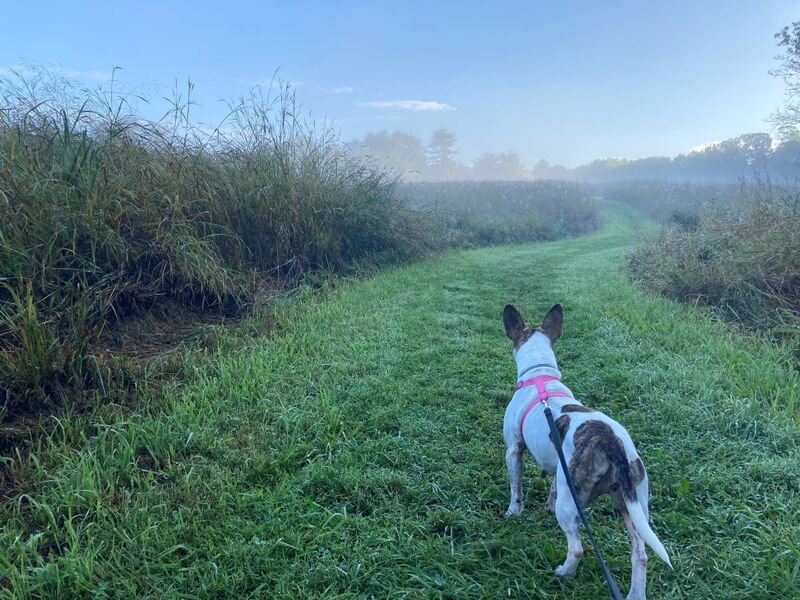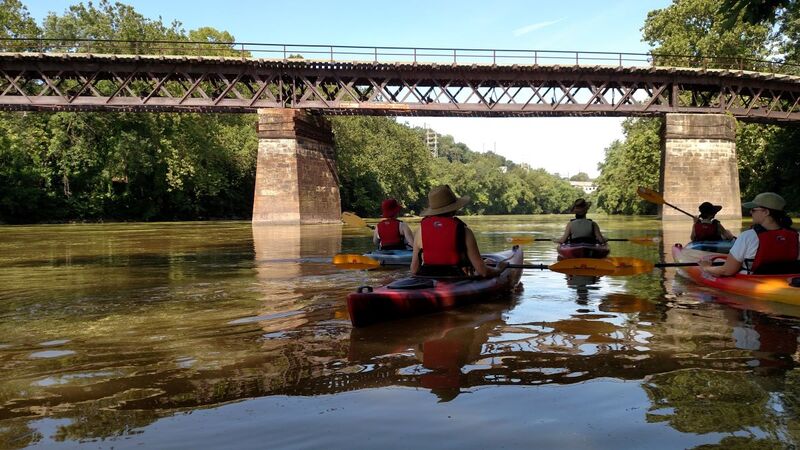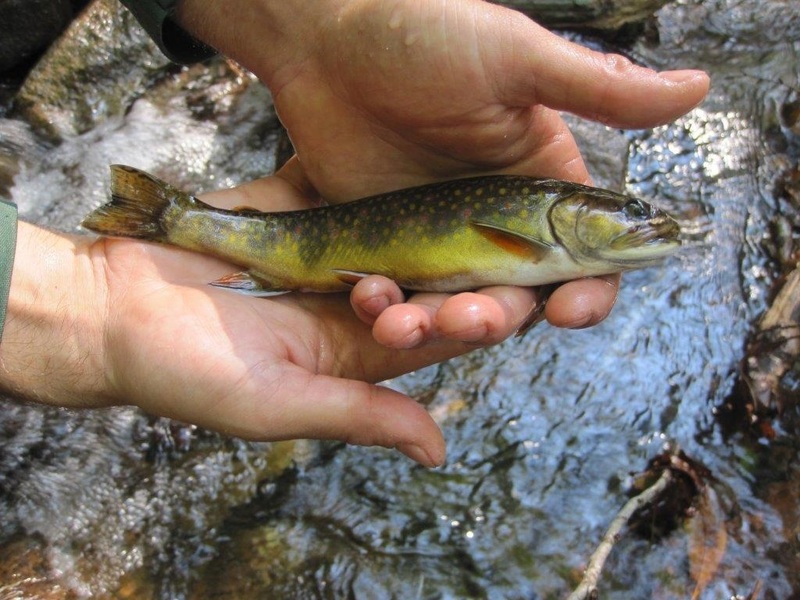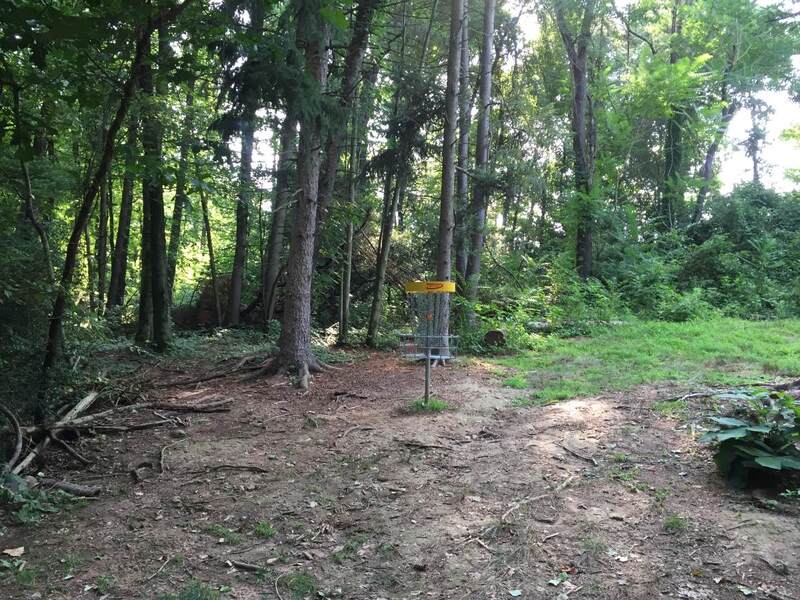Display to header level
Passive recreation in nature can connect people to the outdoors, build support for the protection and stewardship of natural areas, and improve public health. However, recreational activities and associated infrastructure should be carefully considered and implemented to protect natural resources.
“Getting back to nature” means something different to everyone. For some, it’s a quiet walk in the woods, birding, looking for animals. For others, it’s running with their dog through meadows, along mowed trails. And for some, it means zooming downhill on a mountain bike, hitting jumps and flying above the tree limbs.
All of these activities, and many other types of passive recreation in nature can connect people to the outdoors. This is important for not just building support for protection and stewardship of natural areas, it’s also important for improving public health. Many studies have found that spending time in nature and recreating in nature can convey health benefits. The Trust for Public Lands shares that parks help reduce obesity and the risk of many diseases by providing opportunities for physical activity. (Foderaro and Klein, 2023, The Power of Parks to Promote Health: A Special Report). The United States Forest Service also promotes the benefits of spending time outdoors, sharing that natural areas can be more appealing for recreation and therefore support exercise and its associated benefits such as increased life expectancy and reduced cancer risk. Furthermore, the US Forest Service has found that spending time in nature can reduce the risk of depression and increase focus. (US Forest Service, The Wellness Benefits of the Great Outdoors, 2021).
Walking, running, birding, biking, snowmobiling (and more) are all legitimate outdoor recreation activities. However, not every use is appropriate for every site. As we continue to lose more and more natural land to development, what’s left becomes increasingly valuable, and increasingly used. Public and private landowners are under increasing pressure to allow and facilitate more types of use by greater numbers of people. Every landowner must consider their own priorities for their site and determine whether a particular use can coexist with conservation, or whether it will hinder it.
Trails can facilitate stewardship and recreational enjoyment of a property, but also compromise management efforts and wildlife habitat. On the one hand, trails provide easier access through a natural area for stewardship activities and opportunities for observation, contemplation, exploration, and learning by recreational users. On the other hand, they may speed the spread of invasive plants such as stiltgrass (Microstegium vimineum) and garlic-mustard (Alliaria petiolata). Wide and heavily used trails can become both a barrier to the movement of some wildlife (mice, salamanders) and a “wedge of edge,” resulting in a loss of interior forest habitat through opening of the forest canopy.
Trails are essential for proper stewardship and recreational enjoyment of natural lands, but if poorly designed or misused they can become stormwater channels that cut into hillsides and remove soil resources. In severe cases, gully erosion can lower the water table and stress established vegetation. User created trails can produce erosion channels that crush existing vegetation and disturb wildlife. They also lead to more compacted soil, which results in lower water percolation and soil gas exchange—both detriments to vegetation even beyond the area of surface disturbance.
Trails are a great recreational amenity and the best way to get people out into nature, so long as they are…
Information on creating and maintaining trails is included in the Trail Design and Maintenance chapter.
Dogs can enjoy nature too! As long as their people follow a few simple rules.
Dogs should always be leashed. Allowing a dog to run off-leash—except on the owner’s property or for lawful hunting—is prohibited by state and (most) local community laws. Unleashed dogs threaten the safety and enjoyment of other users. Even if the dog off leash is friendly, it may approach another dog that is not, putting the off leash dog in danger too.

Dog walking should be limited to an established trail system to prevent dogs from harassing or killing wildlife, disturbing understory vegetation, and degrading streambanks. This damage may seem insignificant or even unnoticeable to us, but to birds nesting in a meadow or native plants just peeking through the soil, the disturbances can be severe, even deadly. We may see it as playful when a dog chases another animal, like a squirrel, but it’s extremely stressful for an animal that needs to conserve its energy for searching for food. Additionally, wild animals may carry diseases that no one wants their dog to contract.
Finally, owners should clean up after their pets. Besides being a public nuisance, dog waste can degrade local streams and wetlands. Waste left on dry ground can be washed into streams or wetlands during storm events and contribute disease-causing bacteria—including E.coli and fecal coliform bacteria—and excess nutrients to local water sources. The latter can lead to algal blooms that eventually decrease the oxygen level of the water body and lead to fish kills.
For many people, walking or running their dogs is their main source of exercise. Dogs can benefit from getting outside too! But like people, they also need to respect the outdoors for their own safety and that of others.
Pennsylvania has a long tradition of equestrian recreation. Many hikers would be delighted to meet a horse on the trail, but horses can also cause conflicts with other trail users and the natural resources. Like dogs, horses should be kept on trails and under control.
On very large sites, or those at an epicenter of an equestrian community, horse only trails may be established. This is the best way to ensure that there are no conflicts between equestrians and other users. However, this is not always possible. In general, the rule of thumb is that all other users should yield to horses.
Like other users, equestrians also need to carefully consider how, when, and where they ride. Horses are big, heavy, and typically slow moving when they are on trails. They can easily damage trails that are wet, eroding, or overused. Riders need to respect the trails and ride elsewhere if they are not currently fit for equestrian use.
Again, like dogs, the horses’ people need to follow rules related to behavior. They should not train or exercise horses on public lands or trails. Only horses capable of enduring an encounter with other people, other horses, dogs, mountain bikes, or other users should be brought to a public natural area. An untrained or unruly horse can be dangerous to itself, its rider, and to others.
Furthermore, horse excrement is an unwelcome obstacle for other trail users and another potential vector for weed seeds and bacteria. Landowners may consider requiring, or strongly encouraging, riders to use manure catcher bags.
Unless it’s a pre-existing use of the site, equestrian uses should be added cautiously and only after other uses are established. Ideally, trails can be wide enough—or separate trails created—to minimize the potential conflict between pedestrians and riders.
When the mountain biking boom began, riders were portrayed as rebels or bad actors. They took on the same stigmas as skateboarders, snowboarders, and other “extreme” sports athletes. Of course, every mountain biker is different and will behave differently. Most mountain bikers stay on trail and are respectful of other trail users. The early stereotypes may follow mountain bikers to this day.
But mountain bikes do not typically cause major damage to trails on their own. Like other uses, walking, running, or riding a horse, they will cause damage if a trail is poorly designed or not built to accommodate them. Wheels will leave a rut in wet soil, but this may be a symptom of a poorly routed trail. A mountain bike can exacerbate erosion, but if a trail is already too steep to be sustainable, a pedestrian would have the same effect.
Modern mountain bikes are often made of light-weight materials like carbon, lessening their impact on the soils beneath them. Their larger tires carry the lightweight frames over rocks and bumps effortlessly. Rolling on wheels moves far less soil than human feet or equestrian hooves.
Like all other users, it is up to the riders to follow rules and act courteously. Issues can arise when mountain bikes cross paths with pedestrians, dog walkers, or equestrians. Mountain bikers are typically at the bottom of the “yield to” list and are expected to give the right of way to pedestrians and equestrians.
Mountain bikers must also be discouraged from creating new trails or modifying existing trails. There may be places where jumps, berms, rollers and other obstacles are appropriate, but these need to be designed properly and have all necessary approvals from the land-owner.
Trails should be designed with mountain bikes’ speed in mind. Where they are most likely to encounter other users, trails can incorporate a rocky or otherwise difficult to navigate tread. This sort of ride is often described as “technical.” It’s difficult to ride a very technical trail at high speeds. Sharp turns, which slow a rider down, can also be incorporated.
If mountain bikers are encouraged to visit, it may be necessary to designate some trails for mountain bikes only. Steep downhills or other trails which encourage speed may be perfectly appropriate and can be designed and built in harmony with the natural surroundings. However, high speed trails can lead to very dangerous collisions between pedestrians and bikers.
Mountain bikers should no longer be considered rebels or outsiders. In many cases, they can provide a strong and committed volunteer corps. Since mountain bikers are so stigmatized, they often feel that they need to contribute more to the sites where they ride than other user groups do. Mountain biking organizations like the International Mountain Biking Association (IMBA) already train riders on trail building and other skills, making them even more valuable volunteers.
The overabundance of white-tailed deer and Canada geese can significantly affect the plant and water resources of a site. The impact of geese can often be addressed by eliminating the cover types that attract them (open water and lawn). However, reducing the impact of deer on large natural lands is best achieved—at this point—through lethal removal. Under current Pennsylvania game laws, the most practical lethal removal option is hunting during established seasons. (See Deer Management and Goose Management chapters, for discussion of other lethal and non-lethal options.) Hunting can be compatible with other recreational activities if it is properly regulated and organized. Ideally, hunters should be screened and required to pass a proficiency test so that only responsible and skilled hunters are allowed on site. This will result in quick, clean kills and maximize safety for other users, including other hunters. Hunters should be informed that they are a vital part of the stewardship program for the site and not just involved in a recreational activity. An example of a deer management program is included in the Deer Management chapter, as a model for a regulated hunting program.
Water access can provide additional recreation opportunities, particularly for non-motorized boating and fishing.

Kayaking, canoeing, and tubing can be appropriate recreational uses if properly managed and not in conflict with priorities for stewardship, such as protecting aquatic habitat for rare or threatened species. If allowing these uses, it’s important to have designated launch areas for people to enter and exit the water with their watercraft. Otherwise, visitors will create their own access points, damaging vegetation and contributing to streambank erosion along the way.
Designated boat launches should have a stable surface, either natural or manmade as needed. Paddlers should be able to easily access the launch site to encourage use of the designated area and minimize the desire to create social trails. Launches should also be designed to have a low impact on the natural resources in the area, minimizing disturbance during construction and keeping the riparian buffer as intact as possible. Launches should be created in areas of calm water and not in areas prone to erosion. Additional considerations include avoiding important habitat areas such as nesting sites or wetlands.
Interpretive signage can be used to direct people to and encourage use of designated launch areas. Staff or volunteers should also monitor for any social trails created to access waterways in places away from the designated launch. Boat launches should be designed and installed to meet all applicable local, state, and federal permit requirements.
Fishing can be a great use of natural areas and can create a user base of people invested in protecting water quality and the surrounding land. However, there can also be problems associated with fishing. Often, social trails may be created by users to more easily access the water or distance themselves from other anglers. Such social trails degrade vegetation and promote erosion. If fishing is permitted, designated access areas along waterways should be created to deter social trails and reduce the risk of erosion. Landings should be designed and installed to meet all applicable local, state, and federal permit requirements. If on a slope, the trails leading down to these areas should have a gradual slope or steps should be installed. The number of landings should be carefully considered to not impact vegetation and waterway banks more than necessary. Land managers may also have to monitor fishing areas to quickly curtail visitors creating social trails to new areas for fishing. Social trails that are closed should be blocked and replanted with vegetation. Interpretive signage can be employed to explain why it is important to only use designated fishing areas.
Fishing can also introduce invasive species and diseases to the aquatic system and surrounding terrestrial habitat. Live bait worms are usually not native and, if discarded on land, can escape into the surrounding forest. Invasive worms can alter life underground as they can outcompete native worms, deplete resources, and disrupt the food chain. They can also deplete the organic duff layer in a forest by consuming all of the fallen leaves from the forest floor that protect and nourish native seedlings and wildflowers and provide habitat for amphibians, reptiles, and small mammals. Bait fish such as Asian carp can also be invasive and disrupt the food chain. Additionally, they can introduce diseases such as whirling disease.

In order to prevent the introduction of invasive worms and fish, as well as diseases, anglers should be encouraged to use artificial lures or bait fish that they find on site. Any leftover bait should be thrown out rather than dumped on the banks or in the forest. While land managers may not want to take this on as a formal requirement due to the need to then enforce such a regulation, interpretive signage can be installed to recommend the use of artificial lures and proper bait disposal.
Disc golf is a relatively new sport that uses large areas to create “holes” as in golf. Unlike golf, the courses can meander through forests, meadows, or lawn. While this is an exciting way to get people to visit parks and engage with nature, it can also have negative repercussions. Erosion around tees and holes due to overuse is common. Social trails can form from one hole to the next. Throws off-course can lead to trampling of surrounding vegetation. Monitoring the course and addressing these issues before or as they occur can help mitigate negative impacts.

When designing a course, sensitive areas such as wetlands, steep slopes, easily eroded soils, or areas with important plant and wildlife species should be avoided and given a wide buffer. The course holes can be rotated to different areas of the park on a set schedule or as impacts to vegetation, both on or off course, is noted. While this does open up other areas of the park to potential impacts and requires extra maintenance, it can allow time for vegetation to recover or prevent overuse from severely impacting vegetation in the first place.
If erosion occurs and redesign of the entire course is not an option, steps can be taken to mitigate erosion and soil loss. Just like trails, erosion can be addressed with Best Management Practices (BMPs), such as water bars or French mattresses, or green stormwater infrastructure. For a more complete explanation, see the Trail Design and Maintenance chapter.
Social trails often form between holes when players can see the next hole from a previous one and create a shorter path between holes. To encourage players to follow established paths between holes, the holes should be situated in such a way that the next hole is not easily visible except from the designated path. This can be done by allowing enough space between holes, using dense vegetation as a screen, and avoiding parallel holes. Of course, if the course is in a landscaped area, this is not a concern as players can walk freely rather than following a trail.
ATV, snow mobile, and dirt bike use can be incorporated into natural areas. However, they have can have a heavy impact on the environment. As such, trails should be properly designed and additional monitoring of the site to ensure that users are staying on designated trails will be needed. These uses should also avoid high quality and sensitive natural areas like wetlands, streams, and healthy forests. While these uses can have negative impacts on the environment, especially when sited inappropriately, creating designated areas for these uses can create an outlet for people who enjoy these activities, potentially reducing unwarranted uses on other land.
Many publicly accessible open space parcels lend themselves to environmental education through collaboration with local schools and colleges. Teachers can use these areas as outdoor classrooms to immerse students in learning, giving them hands-on experience related to classroom lessons. Every cover type and water resource offers unique opportunities for learning. While this is an important use of natural lands, it should be carefully balanced with student safety and wildlife and habitat protection.
Environmental education can also be conducted outside of the formal school system through on-site programs carried out by the land manager, volunteers, or others. Additionally, interpretive signage, as described in the Trail Signage section in the Trail Design and Maintenance chapter, can be used by visitors for a self-guided learning experience.
In 1990, the Americans with Disabilities Act set new standards for design and construction, to improve conditions for people living with disabilities and impairments. Now, nearly 35 years later, too many designers and land managers still think of those standards as minimums, boxes to be checked, or even as obstacles themselves. However, we need to think about our facilities in a more modern context, applying a holistic approach to design and stewardship which benefits all users.
“Universal Access” is the preferred approach. Universal Access doesn’t just accommodate people with disabilities, but also improves conditions for everyone. Our outdoor spaces need to meet the applicable Federal standards, but they should be designed and stewarded to welcome everyone, regardless of their abilities.
The requirements of the ADA govern more than just parking spaces and trails. They ensure that people of all abilities have safe, accessible routes between site features, like picnic areas and bathrooms. They set the standards for how bathrooms are laid out, to make sure that people using wheelchairs or walkers can safely use the facilities. They guide placement of signs, water fountains, and other amenities to ensure they don’t constrict accessible routes. They also provide standards for symbols, colors, fonts, text sizes and other design considerations for signs, to ensure that people with a variety of visual abilities can use them. As the guidelines govern so many different elements, it should be obvious that universal accessibility must be incorporated holistically.
Too often, designers hear that a site needs to meet ADA standards, so they propose a wide, straight, paved route, which checks the box. They’ve now provided a trail which meets the standards. But they’ve also probably provided a trail which is boring and won’t be heavily used. If we design for the minimum standards, we’ll leave a large portion of our society behind, at the end of the “ADA trail."
We recommend an alternate approach. Instead of providing one area or trail that is specifically designed to meet ADA requirements, remove the barriers to the rest of the site, and allow individual visitors to choose their own level of challenge. Simply removing some barriers will allow more visitors to enjoy more of our outdoors.
Our outdoor spaces are not governed by the same guidelines as businesses or other public spaces. Recreational trails can still have some slopes, though they may need some flat resting areas. They can be surfaced with naturalistic materials, so long as they are firm and stable. They must be wide enough to accommodate a wheelchair, but most visitors would appreciate a trail to be a minimum of 3’ in width too. Trails and facilities can be designed to allow more users to access a site, while still keeping the character of the space.
Universal Accessibility is not easy to implement at some outdoor sites, but it’s not impossible. We recommend landowners and managers consult with experts and professional designers, like landscape architects, to assist with implementing Universally Accessible design features. It’s important to meet the requirements of the federal standards. Access-board.gov and ADA.gov are two good starting points. But a professional designer is best suited to creating designs that meet the requirements, serve the broadest population and lead to fun and interesting experiences.
If a link is broken, try searching on the keyword string preceding the link.
ADA.gov (https://www.ada.gov/, as of 2024)
US Access Board (https://www.access-board.gov/, as of 2024)